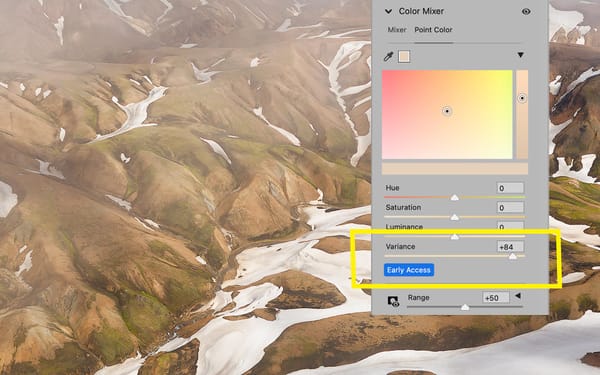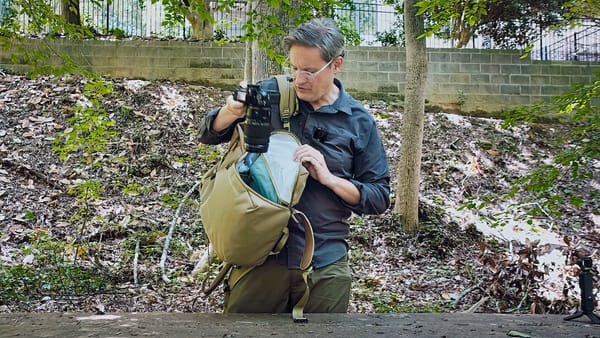Canon RF 16mm f/2.8 STM review: ultra small, light and wide
Tiny RF lens that packs a punch without breaking your wallet

The Canon RF 16mm f/2.8 STM is a small, portable, ultra-wide angle lens for Canon EOS R mirrorless cameras. It weighs a mere 5.8 ounces / 165 grams, fits in the palm of your hand, and costs hundreds of dollars less compared to most Canon RF lenses ($300 in the US and similar prices elsewhere in the world at the time of this review).
Focal length is fixed at 16mm full frame, which means the lens produces photos and videos with a very wide, 108° field of view. Going on specs alone, this lens would appear to be ideally suited for photographing big subjects (e.g, architectural, interior, and landscape photography) and handheld vlogging.
Maximum aperture is f/2.8, which is decent, but a bit middle-of-the-road. I do wish the aperture were larger for more shallow depth-of-field and better low-light performance (especially for video), but at this price point, f/2.8 will do.
How is the image quality? And does it work well for video? Let’s find out.
Build and features
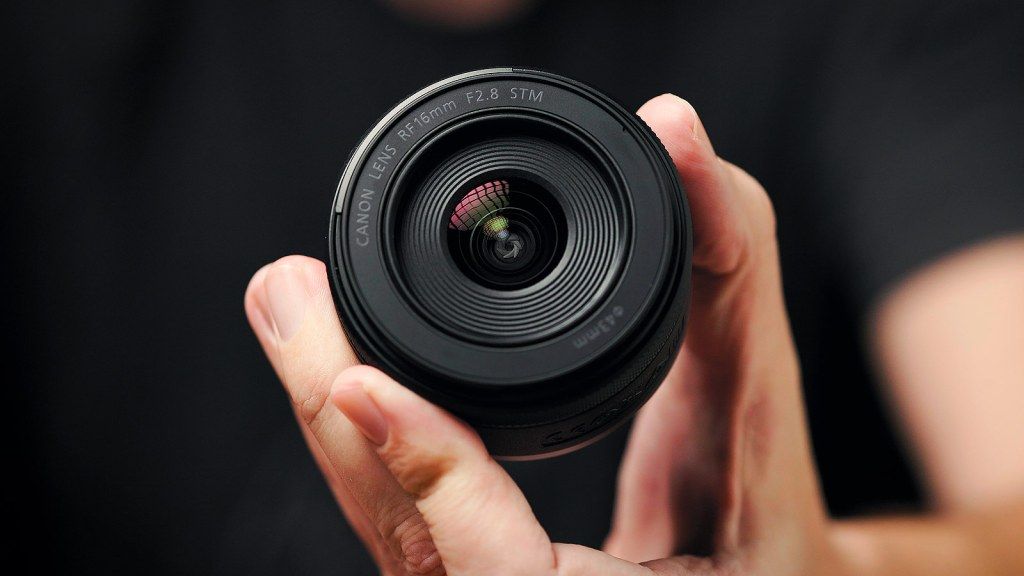
The RF 16mm is barely noticeable when mounted to a camera. You feel like you’re only holding the camera body, which is wonderful when shooting handheld for extended periods of time.
To make the RF 16mm, Canon borrowed the body of the RF 50mm f/1.8. That means the lens uses the same mix of high quality plastics and metal, has no weather sealing, and no optical image stabilization either.
Also like the RF 50mm, autofocusing is handled through an electronic STM “stepping” motor that extends and contracts an inner lens element. This part of the lens is where circular filters may be mounted to a small 43mm filter thread. The focus motor is very quiet, but not entirely silent. The lens also sometimes softly vibrates when trying to lock focus.
The lens has a single ring (not enough room for more) and a single switch on the side for Focus and Control. When set to Control, the ring adjusts ISO, exposure compensation, aperture, or whichever function you assign to the ring in camera. When set to Focus, and with Focus Method set to Manual in the camera menu system, the same ring manually adjusts focus by pulling and pushing the STM motor.
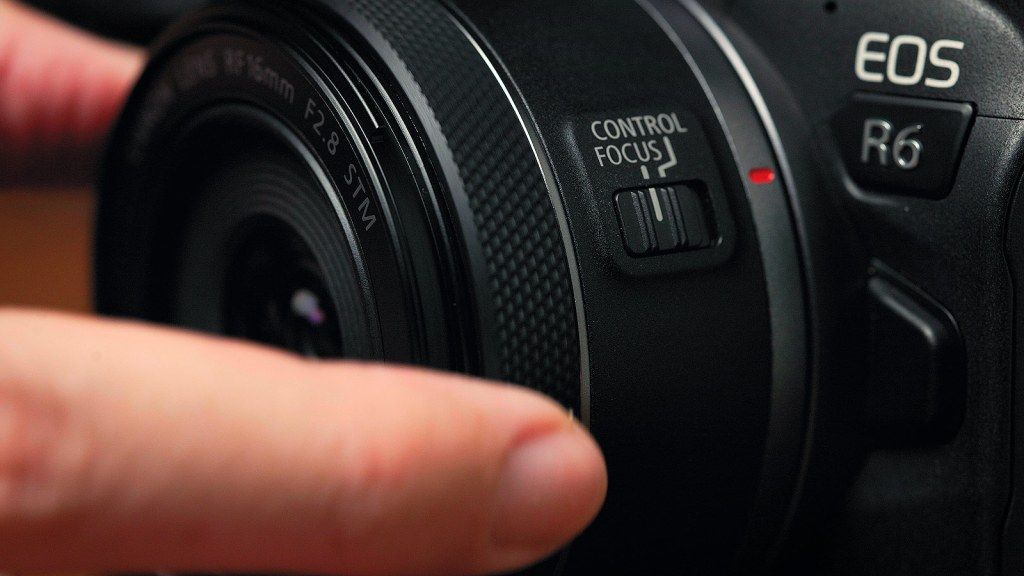
As clever as the single ring design may be, it does have its quirks. One, when Focus Mode is set to Auto and the switch is set to Focus, the ring doesn’t do anything when turned (it doesn’t override auto focus). Second, when Focus Mode is set to Manual and the switch is set to Control, there’s no way to focus the lens. Third, when the switch is set to Control, manual focusing is not an option (you have to use auto focus).
Image quality, clarity and sharpness
Budget lenses like the RF 16mm aren’t exactly known for optimum image quality. If they were, there’d be no reason to spend hundreds more on Canon “L” professional lenses.
For a lens at this price point, image quality is good. Wide-angle photos are clear and sharp, especially in and around the center. The corners and edges however are bit soft and mushy at every aperture setting.


In practical use, this means the RF 16mm doesn’t have a sweet spot for optimum detail and sharpness. The lens seems to perform best around f/8 and f/11 – as other lenses typically do – but the relative difference in image quality between aperture values is mostly negligible.
Chromatic aberration (purple fringing) can sometimes be an issue in high contrast areas. Bokeh also looks a little “wormy” and not as soft as images produced using higher quality glass.
Overall, detail and clarity is never uniform across the entire surface area of the image. Which is unfortunate, but not exactly surprising for a small, budget lens. In and around the center of the image however, detail and sharpness is good for this type of lens.
Distortion and vignette
The RF 16mm enables automatic distortion correction in the EOS R5/R6 when shooting non-RAW photos and videos. This setting cannot be edited (it’s always enabled). You do however have the option of enabling/disabling Peripheral Illumination to control vignette.
RAW images, on the other hand, are not corrected in camera. RAW files are saved straight from the image sensor, and thus include the natural vignette and distortion of the lens. Seeing the non-corrected RAW files, it’s clear why Canon decided to force distortion correction in-camera for video and non-RAW image formats.

(Note: At the time of this review, lens correction profiles for the RF 16mm were only available in Canon’s free Digital Professional software. In the coming months, apps like Adobe Lightroom, DxO PhotoLab, and Capture One should start supporting the lens with their own lens correction profiles.)
Video and vlogging
Vloggers want lightweight, fast lenses with ultra-wide focal lengths and solid autofocus. The RF 16mm is all of these things, so specs-wise it would appear to be the perfect vlogging lens.
And it is, but in practical use, the RF 16mm is unfortunately hampered by the in-body image stabilization system (IBIS) in the Canon EOS R5 and R6.
IBIS is fantastic for handheld photography, but not video on the R5/R6 when using wide angle lenses (of which the RF 16mm certainly qualifies). The mechanical stabilization introduces warping and fluttering around the edges and corners of the video, as demonstrated below in the excerpt from my full review.
Digital Image Stabilization (which may be enabled in-camera) does somewhat reduce the IBIS warping effect, but Digital IS further degrades video by digitally upscaling and cropping the image. All stabilization can of course be turned off, but then handheld video would look even worse.
Which is sad, for the RF 16mm would otherwise be a perfect vlogging lens. I’ve been wanting a lens like this for better image quality, exposure control and low light performance compared to the sub-par optics of action cameras (eg, the GoPro Hero). But action cameras offer far better image stabilization.
Also a negative, focus breathing is pronounced when manually adjusting focus (the field of view zooms in and out). Video shooters will not want to pull focus with this lens.
On a positive note, the STM autofocus does work well for video. The motor is quiet, responsive, and smooth when changing focal points. Live microphones on or near the camera should pick up little-to-no noise from the motor.
With the camera locked down on a tripod or gimbal, the RF 16mm does a decent job with video, and would be a nice option for stabilized, wide-angle video when traveling light.
Final thoughts
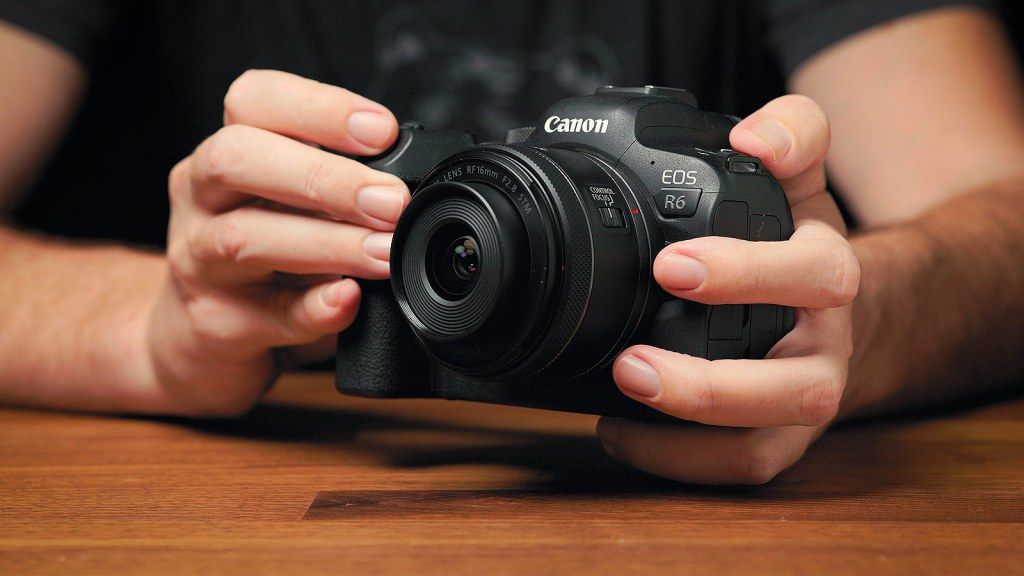
Overall, The Canon RF 16mm is a unique and unusual lens. It’s casual and budget-minded, yet supports an ultra-wide field of view the average user may not want or need.
Which leads me to think Canon may be playing the long game with this lens. Perhaps Canon will release more EOS R cameras in the future with smaller, more affordable APS-C sensors. If they did, then the 16mm focal length of this lens would then be around 24mm, which would be a more usable and comfortable focal length for the average user.
And who knows, perhaps Canon will improve their IBIS system, and make handheld video and vlogging better with this and other wide angle lenses. We’ll just have to wait and see.
Concerning still photography, I would not use the RF 16mm for “portfolio” photography. I own higher quality lenses for that type of work.
But I would absolutely use the RF 16mm if I were traveling and wanted a small and lightweight lens for shooting handheld and taking casual photos. I might also use the RF 16mm for in-the-field landscape videos, which I sometimes post to my YouTube channel, but would only do so with the camera mounted on a tripod.
Overall, the RF 16mm is a casual, affordable lens with good image quality and performance for a lens at this price point. Professional pixel-peepers will undoubtedly find things to complain about, but the average user shouldn’t notice or care. For the money, it’s a great introduction to the world of wide angle photography, and a lot of fun to use.
Check current price
At the time of this review, the RF 16mm f/2.8 retails for $299 in the United States. To check its current price anywhere in the world, click the button below.
Video review
The video version of this review is embedded below.
